Big data ordination towards intensive care event count cases using fast computing GLLVMS
- PMID: 35313816
- PMCID: PMC8939086
- DOI: 10.1186/s12874-022-01538-4
Big data ordination towards intensive care event count cases using fast computing GLLVMS
Erratum in
-
Correction to: Big data ordination towards intensive care event count cases using fast computing GLLVMS.BMC Med Res Methodol. 2022 Apr 18;22(1):114. doi: 10.1186/s12874-022-01602-z. BMC Med Res Methodol. 2022. PMID: 35436851 Free PMC article. No abstract available.
Abstract
Background: In heart data mining and machine learning, dimension reduction is needed to remove multicollinearity. Meanwhile, it has been proven to improve the interpretation of the parameter model. In addition, dimension reduction can also increase the time of computing in high dimensional data.
Methods: In this paper, we perform high dimensional ordination towards event counts in intensive care hospital for Emergency Department (ED 1), First Intensive Care Unit (ICU1), Second Intensive Care Unit (ICU2), Respiratory Care Intensive Care Unit (RICU), Surgical Intensive Care Unit (SICU), Subacute Respiratory Care Unit (RCC), Trauma and Neurosurgery Intensive Care Unit (TNCU), Neonatal Intensive Care Unit (NICU) which use the Generalized Linear Latent Variable Models (GLLVM's).
Results: During the analysis, we measure the performance and calculate the time computing of GLLVM by employing variational approximation and Laplace approximation, and compare the different distributions, including Negative Binomial, Poisson, Gaussian, ZIP, and Tweedie, respectively. GLLVMs (Generalized Linear Latent Variable Models), an extended version of GLMs (Generalized Linear Models) with latent variables, have fast computing time. The major challenge in latent variable modelling is that the function [Formula: see text] is not trivial to solve since the marginal likelihood involves integration over the latent variable u.
Conclusions: In a nutshell, GLLVMs lead as the best performance reaching the variance of 98% comparing other methods. We get the best model negative binomial and Variational approximation, which provides the best accuracy by accuracy value of AIC, AICc, and BIC. In a nutshell, our best model is GLLVM-VA Negative Binomial with AIC 7144.07 and GLLVM-LA Negative Binomial with AIC 6955.922.
Keywords: Fast Computing; GLLVM; Laplace Approximation; Ordination; Variational approximation.
© 2022. The Author(s).
Conflict of interest statement
The authors declare that they have no competing interests.
Figures



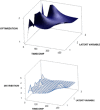
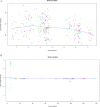
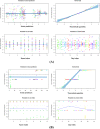
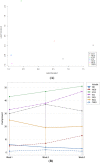
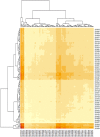

Similar articles
-
Correction to: Big data ordination towards intensive care event count cases using fast computing GLLVMS.BMC Med Res Methodol. 2022 Apr 18;22(1):114. doi: 10.1186/s12874-022-01602-z. BMC Med Res Methodol. 2022. PMID: 35436851 Free PMC article. No abstract available.
-
Efficient estimation of generalized linear latent variable models.PLoS One. 2019 May 1;14(5):e0216129. doi: 10.1371/journal.pone.0216129. eCollection 2019. PLoS One. 2019. PMID: 31042745 Free PMC article.
-
Generalized Matrix Factorization: efficient algorithms for fitting generalized linear latent variable models to large data arrays.J Mach Learn Res. 2022 Nov;23:291. J Mach Learn Res. 2022. PMID: 37102181 Free PMC article.
-
Normal and difficult airways in children: "What's New"-Current evidence.Paediatr Anaesth. 2020 Mar;30(3):257-263. doi: 10.1111/pan.13798. Epub 2020 Jan 14. Paediatr Anaesth. 2020. PMID: 31869488 Free PMC article. Review.
-
Data-driven ICU management: Using Big Data and algorithms to improve outcomes.J Crit Care. 2020 Dec;60:300-304. doi: 10.1016/j.jcrc.2020.09.002. Epub 2020 Sep 9. J Crit Care. 2020. PMID: 32977139 Review.
Cited by
-
Enhancing Hospital Efficiency and Patient Care: Real-Time Tracking and Data-Driven Dispatch in Patient Transport.Sensors (Basel). 2024 Jun 20;24(12):4020. doi: 10.3390/s24124020. Sensors (Basel). 2024. PMID: 38931802 Free PMC article.
-
Correction to: Big data ordination towards intensive care event count cases using fast computing GLLVMS.BMC Med Res Methodol. 2022 Apr 18;22(1):114. doi: 10.1186/s12874-022-01602-z. BMC Med Res Methodol. 2022. PMID: 35436851 Free PMC article. No abstract available.
-
A Study on Decision-Making for Improving Service Efficiency in Hospitals.Healthcare (Basel). 2024 Feb 4;12(3):405. doi: 10.3390/healthcare12030405. Healthcare (Basel). 2024. PMID: 38338290 Free PMC article.
References
-
- Li Q, Lan L, Zeng N, You L, Yin J, Zhou X, et al. A Framework for Big Data Governance to Advance RHINs: A Case Study of China. IEEE Access. 2019;7.
-
- Wang XD, Chen RC, Yan F, Zeng ZQ, Hong CQ. Fast Adaptive K-Means Subspace Clustering for High-Dimensional Data. IEEE Access. 2019;7:42639–51. doi: 10.1109/ACCESS.2019.2907043. - DOI
-
- Raheja JL, Dhiraj, Gopinath D, Chaudhary A. GUI system for elders/patients in intensive care. In: 2014 IEEE International Technology Management Conference, ITMC 2014. 2014.
Publication types
MeSH terms
LinkOut - more resources
Full Text Sources
Medical

